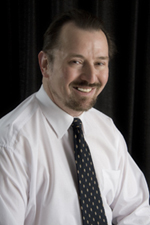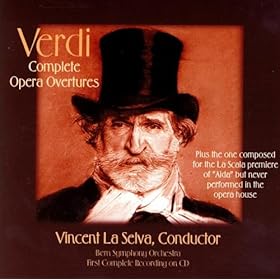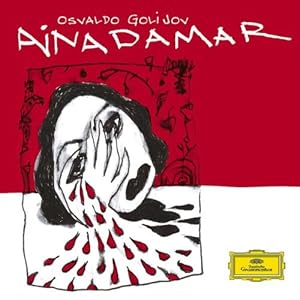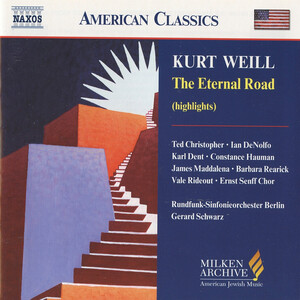CD Release Reviews by Donald Venezia – February 25, 2012
Comments Off on CD Release Reviews by Donald Venezia – February 25, 2012February 25, 2012 by Admin

CD Release Reviews by Donald Venezia
February 25, 2012
ORCHESTRAL – Verdi Overtures, Complete, Vincent La Selva, Bern Symphony Orchestra
 Vincent La Selva has been on the New York music scene forever, it seems. He was an assistant to Leopold Stokowski when he conducted the Symphony of the Air and he’s approaching thirty years conducting free operas in Central Park during the Summer months. And sometimes the throngs spreading out blankets under the stars reaches into the thousands. I’ve seen it from the orchestra pit.
Vincent La Selva has been on the New York music scene forever, it seems. He was an assistant to Leopold Stokowski when he conducted the Symphony of the Air and he’s approaching thirty years conducting free operas in Central Park during the Summer months. And sometimes the throngs spreading out blankets under the stars reaches into the thousands. I’ve seen it from the orchestra pit.
I’ve also seen the quality that Maestro (as those of us who know and love Mr. La Selva refer to him) coaxes from an orchestra. I’m just a little too young to have seen or heard Toscanini conduct live but this is how it must have been for the musicians who played for another conductor everyone refered to as Maestro. So when Maestro La Selva brought me his recording of the eleven Verdi overtures (these are actual OVERTURES and not the PRELUDES) that he had just completed, I anxiously looked forward to something special.
I want to let others speak for me as I feel they have an unbiased slant to these eleven overtures. “Highly invigorating…undeniably exhilarating…a delight,” (American Record Guide). “I have never heard performances that are so direct or so instantly rousing…” (Newark Star Ledger). “He (La Selva) is that rare Verdi conductor…Everything is alive, expressive and sensitive…” (Cleveland Plain Dealer). “A sizzling performance!” (Newhouse Newspapers). “…Reminds us of how concert audiences today are deprived of splendid hors d’oeuvres by the fashion of omitting overtures…” (London Sunday Telegraph).
I have thought about this review for quite a while, and the absolutely best accolade I can give this recording is that through the hands of Vincent La Selva, his producer and recording engineer, and the musicians of the Bern Symphony Orchestra, you have one of the finest recordings and performances you are ever going to hear. Some will feel that these overtures sound like Toscanini (and some musicians have TOLD Maestro La Selva that he reminds them of “the old man!”). But Toscanini never recorded in stereo. (That’s really not true–buried somewhere in the vaults of RCA are two stereo recordings of Toscanini, but they were recorded when Toscanini was about to retire.) Toscanini’s protege, Guido Cantelli, made a few stereo recordings for both RCA and EMI before his tragic death in a plane crash in 1956 and you may feel they remind you of Cantelli. I treasure my Toscanini and Cantelli performances, but I think after hearing Maestro La Selva and the Bern Symphony Orchestra, you’ll not only hold this CD as a prize in your collection but you’ll also be left wanting more from this incredible combination! More, PLEASE!
Newport Classics 85649
ASIN B000056OE5
OPERA – Ainadamar, Osvaldo Golijov, Robert Spano and The Atlanta Symphony Orchestra and Chorus, Dawn Upshaw, soprano
 Okay, first things first. I LOVE THIS WORK! There. I said it. Will I come back to it? Yes I will, and you will as well!
Okay, first things first. I LOVE THIS WORK! There. I said it. Will I come back to it? Yes I will, and you will as well!
Osvaldo Golijov was born in 1960. For those of you who might shy away from twentieth century music (although this was written in the twenty-first century but more on that later) because you
might find you don’t understand it, you will love this work. This is sensual music. It’s a romantic love story set in exotic places during the simmering, summer months, and just oozes with regret and sadness. Golijov and his librettist David Henry Hwang wrote the recipe and Robert Spano, Dawn Upshaw, et al, are the cooks in this steaming hot kitchen!
I’ve heard the name Osvaldo Golijov before, and his music is receiving more and more attention. This opera, “Ainadamar,” should bring his name wider recognition. In case you don’t know the name, Golijov is the son of Eastern European Jewish parents who had emigrated to Argentina, where Golijov grew up. According to the booklet which comes with the CD, “The most striking aspect of Golijov’s work is not what he assimilates but how he does it…It (his works) remains, however, a fiercely personal vision…” and I couldn’t agree more!
“Ainadamar” centers around Catalan actress and tragedian Margarita Xirgu, who was a collaborator with Federico Garcia Lorca on several of his plays. Xirgu is in Uruguay in 1969 about to perform the lead role in Lorca’s “Mariana Pineda,” and is haunted by the thought that she could have saved Lorca’s life from the fascist Falangistas that murdered Lorca in August of 1936.
The work opens (Tracks 1 and 2) with foreboding and heroic trumpets, only muted, to jog one’s memory of “Man of La Mancha.” There are flamenco guitars and dancers (think of the wonderful music Jerry Goldsmith wrote for the recent “Zorro” movies) to evoke more of the feeling of Spain, leading into Moorish music sung (later in Track 2) to remind us Spain’s Moorish connection, all leading to a rhumba with a feel of Chavez to bring Track 2 to its conclusion. All of these different ingredients boil over in this steamy, fantastic romantic opera! And I mean fantastic in both the sense of this being an unbelievably beautiful piece of music and the surreal surroundings that will transport us to exotic places we may have never been.
In the “Aria to the Statue of Mariana” (Track 5) think of the aria section of Villa-Lobos’ “Bachianas Brasileiras no. 5” meets the “Flower Duet” from Lakme. But if you listen VERY closely say, at 2:56, you have an incredible bit of music cooking where the mezzo (Kelley O’Connor as Lorca) and oboe, in their upper registers, interweave with the clarinet and the bassoon, both in their upper registers, with a dash of Stravinsky a la “The Rite of Spring” thrown in, to make some eerily fantastic effects. (I’ll say right here at the end of the track what I always do at the end of the Villa-Lobos, which is “Stick a fork in me, I’m done!”)
And what fantasy! Not only is the deceased Lorca singing but the statues come to life and sing as well (shades of Don Giovanni’s “Commandatore”?) with soprano Dawn Upshaw joining in later, and still later in the track by Jessica Rivera. Always with the flavor of Villa Lobos simmering underneath some wonderful original writing!
The incredible Dawn Upshaw is in great voice and is fantastic, and the surrounding cast, some of whom I’ve named earlier, are just as wonderful as Ms. Upshaw. A terrific cast, one and all.
Robert Spano and his Atlanta Symphony Orchestra have recorded many twentieth century compositions, mostly on the Telarc label, and Mr. Spano and his orchestra are in terrific form. Kudos to The Women of The Atlanta Symphony Chorus and their director Norman Mackenzie for a great supporting job.
Ainadamar was premiered August 10, 2003 at Tanglewood, and the first performance of the revised version, which I’m assuming this is (the liner notes are not clear on this point), took place on July 30, 2005 by the Santa Fe Opera. I don’t know if I’m going to go out to look for the DVD of either performance, simply because I’ve allowed my own fantasy and imagination to run as wild as this beautiful music! A must for opera lovers, for Romantics and for anyone who loves music!
DG B0006429-02
(UPC 028947761655)
CONCERTO – Jennifer Koh – Portraits, Szymanowski Violin Concerto No. 1, Martinu Violin Concerto No. 2 , Bartok Two Portraits, Op. 5, Grant Park Orchestra, Carlos Kalman conductor
 Usually when a recording of violin concertos is made you’ll find one of the standard repertoire works, say, the Mendelssohn, the Beethoven, or even the Tchaikovsky. Here are two violin concertos and two short works by Bartok that, in the hands of Ms. Koh, should be considered standards of the repertoire. If you haven’t heard of Jennifer Koh before, don’t feel bad—I hadn’t either. But once you hear this recording you’ll want to immediately run out and get your hands on the rest of the recordings she’s made!
Usually when a recording of violin concertos is made you’ll find one of the standard repertoire works, say, the Mendelssohn, the Beethoven, or even the Tchaikovsky. Here are two violin concertos and two short works by Bartok that, in the hands of Ms. Koh, should be considered standards of the repertoire. If you haven’t heard of Jennifer Koh before, don’t feel bad—I hadn’t either. But once you hear this recording you’ll want to immediately run out and get your hands on the rest of the recordings she’s made!
Karol Szymanowski’s music is unabashedly romantic. Yes, there are instances where he moves his music into twentieth century language, but the sweep of melody in his Violin Concerto No. 1 is firmly rooted in the nineteenth, even though the concerto (in one movement) was written in 1916. Upon first listening, you’re immediately captivated by the playful, augmented orchestra (you can hear the glockenspiel, the celeste and what sounds like more than one harp) and out of this bouncing the violin makes its first entrance in rhapsodic, dreamy fashion. There’s no designation for a second or third movement, as the work moves through its material in a stream of consciousness fashion. There may be moments of impressionism and splashes of a different color here and there, but it always returns to that same beautiful romanticism that forms its underlying structure.
Mischa Elman was in the audience in Boston’s Symphony Hall for the premiere of Martinu’s Symphony No. 1 and asked of the composer a new violin concerto. Martinu obliged with the Violin Concerto No. 2, of which Elman played the premiere in December of 1943. In the first movement (Andante) of the Violin Concerto No. 2, I find the same breadth and beauty as I do in the Sibelius Violin Concerto. The orchestration is magnificent and the playing of BOTH soloist and orchestra are masterful and stunning! The second movement (Andante moderato) has the feeling of a gentle cool night, tender and dreamy with little whisps of wind, sweetly played. The last movement (Poco Allegro) is a fun dialogue between soloist and orchestra…there are times the orchestra plays fragments of what the soloist plays and there are other times the orchestra makes a statement and the soloist answers in different music. A wonderfully inventive conclusion to a very enjoyable concerto!
The Bartok “Two Portraits” are the oldest written pieces on the disk. The Portrait No. 1 (Andante sostenuto) is rich and lush, and exquisitely played. The Portrait No. 2 (Presto) is not for violin solo and orchestra. It’s an orchestral work marked “Distorted” but I would call it more a scherzo, a quick, comedic, joyful piece, and even though it’s in a minor key, I get the feeling more of riding on a carousel!
This is a wonderful CD and a wonderful program. The violin playing of Ms. Koh is arresting. Her sureness of hand, exactitude of intonation, sweetness of tone, dynamic range, and lovely vibrato combine for unabashed music making. I’m so looking forward to more of her recordings.
The Grant Park Orchestra is a great sounding and flexible group. Carlos Kalman is a conductor who is not only a phenomenal accompanist and colorist but has vision and an interpretation that brings out the beauty in the music. The recorded sound is lush and rich, and so clear you can hear the detailed orchestrations.
Cedille Records 900000 089
UPC 735131 908924
ORATORIO – Kurt Weill – The Eternal Road (Highlights), Soloists, Ernst Senff Chor, Berlin Radio Symphony Orchestra, Gerard Schwarz
 I sent a copy of the June WWFM e-Newsletter to Angela Duryea of Shuman Associates (one of New York City’s largest and well-known artist’s reps) and, after seeing that WWFM broadcasts Gerard Schwarz and the Seattle Symphony, she sent me one of the most original and most unbelievable works I have every run across.
I sent a copy of the June WWFM e-Newsletter to Angela Duryea of Shuman Associates (one of New York City’s largest and well-known artist’s reps) and, after seeing that WWFM broadcasts Gerard Schwarz and the Seattle Symphony, she sent me one of the most original and most unbelievable works I have every run across.
This work of Weill’s was recorded as part of Naxos’ Milken Archive series. The Milken Family Foundation established the Milken Archive of American Jewish Music in 1990 which “would unite the Jewish people’s eternal love of music with their commitment to education,” and Naxos became their partner for the recording and the distribution of the material.
Meyer Weisgal, who conceived the whole idea of “The Eternal Road,” was the Midwest region Executive Director of the Zionist Organization of America. Weisgal staged what he called “pageants” to promote “public awareness” of the threat to Jews worldwide, and one of his most successful pageants was his “Israel Reborn,” an all-Chicago Hanukkah festival which took place in 1932.
Soon after the National Socialist Party was elected to power in 1933, the new Chancellor Adolf Hitler issued an edict expelling Jewish artists from Germany. Upon hearing this news, Weisgal conceived his grandest pageant which he was going to call “The Eternal Road.” Weisgal’s concept was to be three-fold: A response to the atrocities the newly elected NAZI party were beginning to inflict upon the Jewish residents of Germany; to retell the wanderings and sufferings of the Jewish people through reenacted Biblical accounts; and “to suggest a messianic national hope, enshrined in the still young Zionist enterprise, for the first realizable alternative in nearly 2,000 years to that ‘eternal road’ of helplessness.”
One of the artistic casualties of the NAZI policies of expelling Jews with artistic leanings was world-renowned theater and film director Max Reinhardt. When Weisgal got wind of Reinhardt’s expulsion from Germany, Weisgal sent a cable to Reinhardt with the message “If Hitler doesn’t want you, I’ll take you!” Reinhardt readily accepted. Weisgal then asked Reinhardt to suggest a playwright and Reinhardt’s suggestion was Franz Werfel, a fellow Jewish refugee from Germany who had been expelled from The Prussian Academy of Art. For their composer, they decided Kurt Weill was their man. The premiere, which was scheduled for October 1935, had to be pushed back to December of 1936 with many cuts and revisions, and took place at the Manhattan Opera House.
My first impression of the work was Weill meets Handel. After seeing which part of the Bible the text was initally based on, I thought of Israel in Egypt, and after the opening brass fanfare, there’s a brief chorus which leads to a tenor recitative and a choral fugue! The total effect of the whole composition is nothing short of brilliant. For instance, in track 6, the “Dance Around the Golden Calf,” which I can describe as Saint-Saens “Bacchanale” meets Afro-Cuban Hollywood, where bongos (!) are employed in the orchestra, and guess what? It works beautifully! Then, in the very next track, “The Beam Moses,” you go to music that might be based on chant used in synagogues since medieval times. The music throughout is very much based in its time. You can detect that 1920s or 1930s feel, but there’s a freshness, almost as if it were written yesterday.
The socio-musical implications are never more apparent than in track 5, “In Egypt/Moses and Miriam.” The movement begins very quietly with a march reminiscent of Mahler. The Rabbi (Karl Dent) tells the portion of the story (via a recitative) about the new Pharaoh, after seeing how much the children of Joseph had multiplied, “set taskmasters over them.” At that point, the march returns with a hideous twist using trombones “glissing” (a technique where there is no set pitch, but it slides from one note to another) and sounding VERY much like the type of march you would see storm troopers parading to. All of this leading to a BEAUTIFUL, heart-wrenching duet between Miriam (Barbara Rearick) and Moses (James Maddalena, who also sings Joseph).
I’m not a Weill scholar, but I do know his theatre works. In some ways this is the Kurt Weill I know and you will know, but this is much more. This is even more of the genius we know Kurt Weill to be — the melding of styles and musical periods, the marriage of text pictures to music, this is a work that was well before its time, which is the only reason I can see for it lasting only 153 performances and bankrupting Weisgal. And even sadder, as the booklet accompanying the CD goes on to say “Neither the press nor the public appeared to have picked up on that message (the coming holocaust), almost out of political avoidance…” The operas of Verdi tell us the plight of Italy during Verdi’s time, and “The Eternal Road” does no less for the coming dark days the world was about to endure.
Great performances are delivered by Gerard Schwarz, Ted hristopher, Ian DeNolfo, Karl Dent, Constance Hauman, James Maddalena, Barbara Rearick, Vale Rideout, the Ernst Senff Choir and the Berlin Radio Symphony Orchestra. The recording by Naxos is warm and expansive so that you feel like you’re right in the middle of the concert hall and want to jump up applauding as the final notes are played. And thank you to The Milken Archive for not only giving us this glimpse into “The Eternal Road,” but also, as Angela Duryea tells me, there will be a COMPLETE “Eternal Road” coming out in the near future. If the missing music is anything like what I just heard (for the fifth or sixth time now) I going to start to get ready NOW!
Naxos 8.559402
UPC 636943 940228
SOUND TRACK – The Essential Hollywood
 Please allow me two points of history before I begin to review this 2 CD set, because both are essential to better understand how this recording came to be.
Please allow me two points of history before I begin to review this 2 CD set, because both are essential to better understand how this recording came to be.
Point 1: Much has been written about the threatened survival of the classical music recording industry. Companies have been trying to find a way to remain solvent. The recording industry has not been exempt from the merger mania that has taken place over the last couple of decades. SONY bought out Columbia/CBS. BMG bought out RCA. Then, perhaps three years ago or so, BMG merged with SONY. Due to this series of mergers, label exclusivity no longer exists. Artists that you remember being on RCA/BMG you will now find on this SONY release.
Point 2: During 2000 I had the opportunity to interview John Mauceri, the conductor of The Hollywood Bowl Orchestra and a protégé of Leonard Bernstein. When I asked Mr. Mauceri who he felt the great contemporary composers were, I mentioned Hans Zimmer in the same breath as John Corigliano, and Mr. Mauceri’s eyes widened. Unbeknownst to me, I had hit something that was very close to his heart — his belief that our Western Classical music tradition emigrated to Hollywood just as the Third Reich was coming to power in Europe. Composers who would write for film carried the symphonies of Beethoven, the songs of Strauss and Mahler, and everything they learned in the conservatories of Europe and placed it for safe keeping in the scores they wrote for Hollywood. And what scores they were!!!
In The Essential Hollywood, you get a two CD set of music from twenty-five movies that not only are classic movies but classic film scores. All of this material is not newly recorded, and that’s not necessarily a bad thing. What SONY/BMG did was to cull tracks from both archives for this set and place it on the SONY Classical label.
Charles Gerhardt, with the assistance of producer George Korngold, son of Erich Wolfgang Korngold, recorded fifteen magnificent LPs of film music for RCA in the 1970s that were later transferred to CD. From those fifteen we hear Gerhard conducting such classic orchestral masterworks as Max Steiner’s famous “Tara’s Theme” from “Gone with the Wind,” a suite from “Casablanca,” and “King Kong,” which undulates between the barbaric and the ultra-romantic.
Gerhardt’s mastery is continued with Franz Waxman’s score to “Sunset Boulevard,” Bernard Herrmann’s classic “Citizen Kane” and the spectacular “King’s Row” by Erich Wolfgang Korngold, who was a child prodigy named after Mozart and wrote his first operas at the age of 10 and 11! When you listen to these Gerhardt tracks, you notice all the care taken in the preparation of the music and all the care given in its performance. There’s a reason these fifteen recordings were treasured when they were available, and you get a great smattering of why right here!
This CD set also features conductors interpreting their own scores. There’s the requisite John Williams conducting his “Star Wars” from the original sound track (listen closely and you’ll hear material that doesn’t appear in subsequent recordings) as well as Williams conducting his music from “E.T.” (“The Flying There”), “Jaws” (“Main Theme”) and “Close Encounters” (“The Dialogue,” which is PHENOMENAL!). Dmitri Tiomkin conducts an incredible arrangement of his theme to “High Noon,” Henry Mancini conducts his “Moon River” and “Pink Panther” themes, Enno Morricone conducts his “The Good, the Bad and the Ugly” (nothing ugly about the performance!) and Elmer Bernstein conducts probably the most famous western music ever, the theme to his “Magnificent Seven”!
Recent recordings also make up parts of the collection. Esa-Pekka Salonen leads the Los Angeles Philharmonic in music to Bernard Herrmann’s score for “Psycho” (psychotically played!), Riccardo Muti and the La Scala Philharmonic make you a deal you can’t refuse in Nino Rota’s score for “The Godfather Part II,” and just for good measure, John Barry conducts “The James Bond Theme” that he initially wrote for “Dr. No”!
The one blemish, for me, was the sound quality of what may have been a very good performance by Arthur Fiedler and the Boston Pops of Miklos Rozsa’s “March of the Charioteers” from “Ben Hur.” The sound quality of the track was muddled, slightly distorted and therefore a little disappointing.
There are at least two ways to enjoy “The Essential Hollywood,” and I’d suggest them both, but at different times. Pop both CDs into your player, grab your large drink and your bag of popcorn and enjoy; or pop the CDs into your player, get dressed up in your concert attire, start the performance at 8:10 to be fashionably late and listen to a sumptuous symphonic sound in your own home. Either way, you can’t miss!
SONY Classical 82876-77086-2
UPC 82876-77086-2
Category Sound | Tags:
Comments Off on CD Release Reviews by Donald Venezia – February 25, 2012
Sorry, comments are closed.

